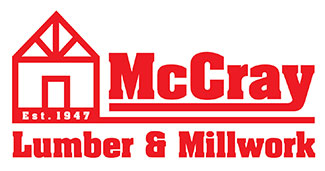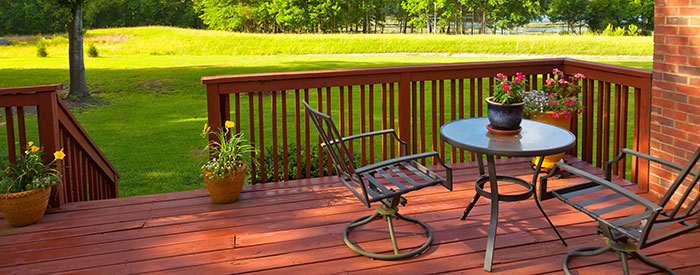May is Deck Safety Month. This designation was established by the North American Deck and Railing Association in an effort to increase public awareness of the importance of regular deck inspection and maintenance and stress the importance of proper installation of new decks. Since spring tends to be when most people begin using their decks for the season, this is perfect time to inspect your deck and fix any issues.
Decks are exposed to rain, snow, ice, sun, and extreme temperatures year round, all of which can take a toll on their stability and structural soundness. A deck that has been poorly maintained can become unsafe or even collapse. Older decks are even more at risk for problems and require more scrutiny. Older decks may have been constructed before code requirements and may use improper deck-to-house attachments using only nails, rather than bolts as required by current codes. Improper deck-to-house attachment is the most common cause of deck collapses. Currently, there are about 40 million decks in the U.S. that are more than 20 years old.
Thoroughly inspecting your deck can help you identify and correct any problems that could compromise the safety of your deck. Proper inspection requires special knowledge and expertise. McCray Lumber and Millwork strongly suggests hiring a professional home inspector, professional deck builder, or engineer to inspect your deck. A professional will perform a comprehensive inspection of your deck, bring any issues to your attention, and ensure that your deck is safe and code compliant.
Things that should be examined as part of your deck inspection include:
Ledger board – Ensure that the ledger board is secure and that the fasteners are in place.
Flashing – Remove any debris that has collected. Replace any flashing that is damaged or missing or in any areas where water is collecting.
Support posts and joists – Check all of the support posts and joists to ensure they are structurally sound.
Decking – Check the condition of deck boards and stair treads. They should not sag or sway when tested.
Railing – Check the railings and banisters and make sure they are secure. They should not wobble or give at all when pushed.
Stairs – Check the risers and stringers to ensure they are securely attached and in good condition.
Fasteners – Make sure all of the fasteners are in good condition. Tighten any loose screws or anchors and drive in any loose nails. Replace any fasteners that are missing or rusted.
Split or decaying wood – Using an ice pick or a flat screw driver, check for split or decaying wood. If you can insert a sharp instrument more than ¼ inch deep or if the wood feels spongy or breaks off without splintering, you most likely have decay. Check the decking, stairs, and railing as well as the support structures.
Lighting and electrical – Test all of the lighting and electrical outlets for proper functioning. Clean all of the light fixtures and replace any burnt out bulbs. This is a great time to add addition lighting for added ambience and security.
Cleaning and maintenance – Take this opportunity to give your deck a spring cleaning. Remove everything from the deck, including patio furniture, plants, and grills. Sweep away all of the leaves and debris. Clean it with soap and water. This is also a great time to apply a new coat of stain and sealant.
After your deck passes inspection, you can enjoy your it with the peace of mind of knowing it’s safe and sturdy.


